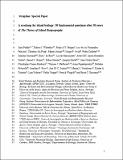Por favor, use este identificador para citar o enlazar a este item:
http://hdl.handle.net/10261/152400COMPARTIR / EXPORTAR:
 SHARE SHARE
 CORE
BASE CORE
BASE
|
|
| Visualizar otros formatos: MARC | Dublin Core | RDF | ORE | MODS | METS | DIDL | DATACITE | |

| Campo DC | Valor | Lengua/Idioma |
|---|---|---|
| dc.contributor.author | Patiño, Jairo | - |
| dc.contributor.author | Whittaker, R.J. | - |
| dc.contributor.author | Borges, Paulo A.V. | - |
| dc.contributor.author | Fernández-Palacios, José María | - |
| dc.contributor.author | Ah-Peng, Claudine | - |
| dc.contributor.author | Araújo, Miguel B. | - |
| dc.contributor.author | Ávila, Sergio P. | - |
| dc.contributor.author | Cardoso, Pedro | - |
| dc.contributor.author | Cornuault, Josselin | - |
| dc.contributor.author | de Boer, E.J. | - |
| dc.contributor.author | de Nascimento, L. | - |
| dc.contributor.author | Gil, A. | - |
| dc.contributor.author | González-Castro, Aarón | - |
| dc.contributor.author | Gruner, D.S. | - |
| dc.contributor.author | Heleno, Rubén H. | - |
| dc.contributor.author | Hortal, Joaquín | - |
| dc.contributor.author | Illera, Juan Carlos | - |
| dc.contributor.author | Kaiser-Bunbury, C.N. | - |
| dc.contributor.author | Matthews, T.J. | - |
| dc.contributor.author | Papadopoulou, Anna | - |
| dc.contributor.author | Pettorelli, N. | - |
| dc.contributor.author | Price, J.P. | - |
| dc.contributor.author | Santos, Ana Margarida C. | - |
| dc.contributor.author | Steinbauer, Manuel J. | - |
| dc.contributor.author | Triantis, K.A. | - |
| dc.contributor.author | Valente, L. | - |
| dc.contributor.author | Vargas, Pablo | - |
| dc.contributor.author | Weigelt, P. | - |
| dc.contributor.author | Emerson, Brent C. | - |
| dc.date.accessioned | 2017-07-06T07:32:02Z | - |
| dc.date.available | 2017-07-06T07:32:02Z | - |
| dc.date.issued | 2017 | - |
| dc.identifier | doi: 10.1111/jbi.12986 | - |
| dc.identifier | issn: 1365-2699 | - |
| dc.identifier.citation | Journal of Biogeography 44(5): 963-983 (2017) | - |
| dc.identifier.uri | http://hdl.handle.net/10261/152400 | - |
| dc.description.abstract | Aims: The 50th anniversary of the publication of the seminal book, The Theory of Island Biogeography, by Robert H. MacArthur and Edward O. Wilson, is a timely moment to review and identify key research foci that could advance island biology. Here, we take a collaborative horizon-scanning approach to identify 50 fundamental questions for the continued development of the field. Location: Worldwide. Methods: We adapted a well-established methodology of horizon scanning to identify priority research questions in island biology, and initiated it during the Island Biology 2016 conference held in the Azores. A multidisciplinary working group prepared an initial pool of 187 questions. A series of online surveys was then used to refine a list of the 50 top priority questions. The final shortlist was restricted to questions with a broad conceptual scope, and which should be answerable through achievable research approaches. Results: Questions were structured around four broad and partially overlapping island topics, including: (Macro)Ecology and Biogeography, (Macro)Evolution, Community Ecology, and Conservation and Management. These topics were then subdivided according to the following subject areas: global diversity patterns (five questions in total); island ontogeny and past climate change (4); island rules and syndromes (3); island biogeography theory (4); immigration–speciation–extinction dynamics (5); speciation and diversification (4); dispersal and colonization (3); community assembly (6); biotic interactions (2); global change (5); conservation and management policies (5); and invasive alien species (4). Main conclusions: Collectively, this cross-disciplinary set of topics covering the 50 fundamental questions has the potential to stimulate and guide future research in island biology. By covering fields ranging from biogeography, community ecology and evolution to global change, this horizon scan may help to foster the formation of interdisciplinary research networks, enhancing joint efforts to better understand the past, present and future of island biotas. | - |
| dc.description.sponsorship | B.C.E. was supported by Spanish grant CGL2013-42589-P awarded to B.C.E. by the MINECO and co-financed by FEDER, and Spanish grant S20141203_002597 awarded to B.C.E. by the Organismo Autónomo Parques Nacionales of the MAGRAMA. | - |
| dc.publisher | John Wiley & Sons | - |
| dc.relation | info:eu-repo/grantAgreement/MINECO/Plan Estatal de Investigación Científica y Técnica y de Innovación 2013-2016/CGL2013-42589-P | - |
| dc.relation.isversionof | Postprint | - |
| dc.rights | openAccess | - |
| dc.subject | Araújo, Miguel B. | - |
| dc.title | A roadmap for island biology: 50 fundamental questions after 50 years of The Theory of Island Biogeography | - |
| dc.type | artículo | - |
| dc.identifier.doi | 10.1111/jbi.12986 | - |
| dc.relation.publisherversion | https://doi.org/10.1111/jbi.12986 | - |
| dc.date.updated | 2017-07-06T07:32:04Z | - |
| dc.description.version | Peer Reviewed | - |
| dc.language.rfc3066 | eng | - |
| dc.contributor.funder | Ministerio de Economía y Competitividad (España) | - |
| dc.relation.csic | Sí | - |
| dc.identifier.funder | http://dx.doi.org/10.13039/501100003329 | es_ES |
| dc.type.coar | http://purl.org/coar/resource_type/c_6501 | es_ES |
| item.openairetype | artículo | - |
| item.grantfulltext | open | - |
| item.cerifentitytype | Publications | - |
| item.openairecristype | http://purl.org/coar/resource_type/c_18cf | - |
| item.fulltext | With Fulltext | - |
| Aparece en las colecciones: | (RJB) Artículos (EBD) Artículos (IPNA) Artículos (MNCN) Artículos | |
Ficheros en este ítem:
| Fichero | Descripción | Tamaño | Formato | |
|---|---|---|---|---|
| Roadmap_Patino_Postprint_Art2017.pdf | 2,04 MB | Adobe PDF |  Visualizar/Abrir |
CORE Recommender
SCOPUSTM
Citations
158
checked on 11-abr-2024
WEB OF SCIENCETM
Citations
142
checked on 27-feb-2024
Page view(s)
656
checked on 23-abr-2024
Download(s)
199
checked on 23-abr-2024
Google ScholarTM
Check
Altmetric
Altmetric
NOTA: Los ítems de Digital.CSIC están protegidos por copyright, con todos los derechos reservados, a menos que se indique lo contrario.
